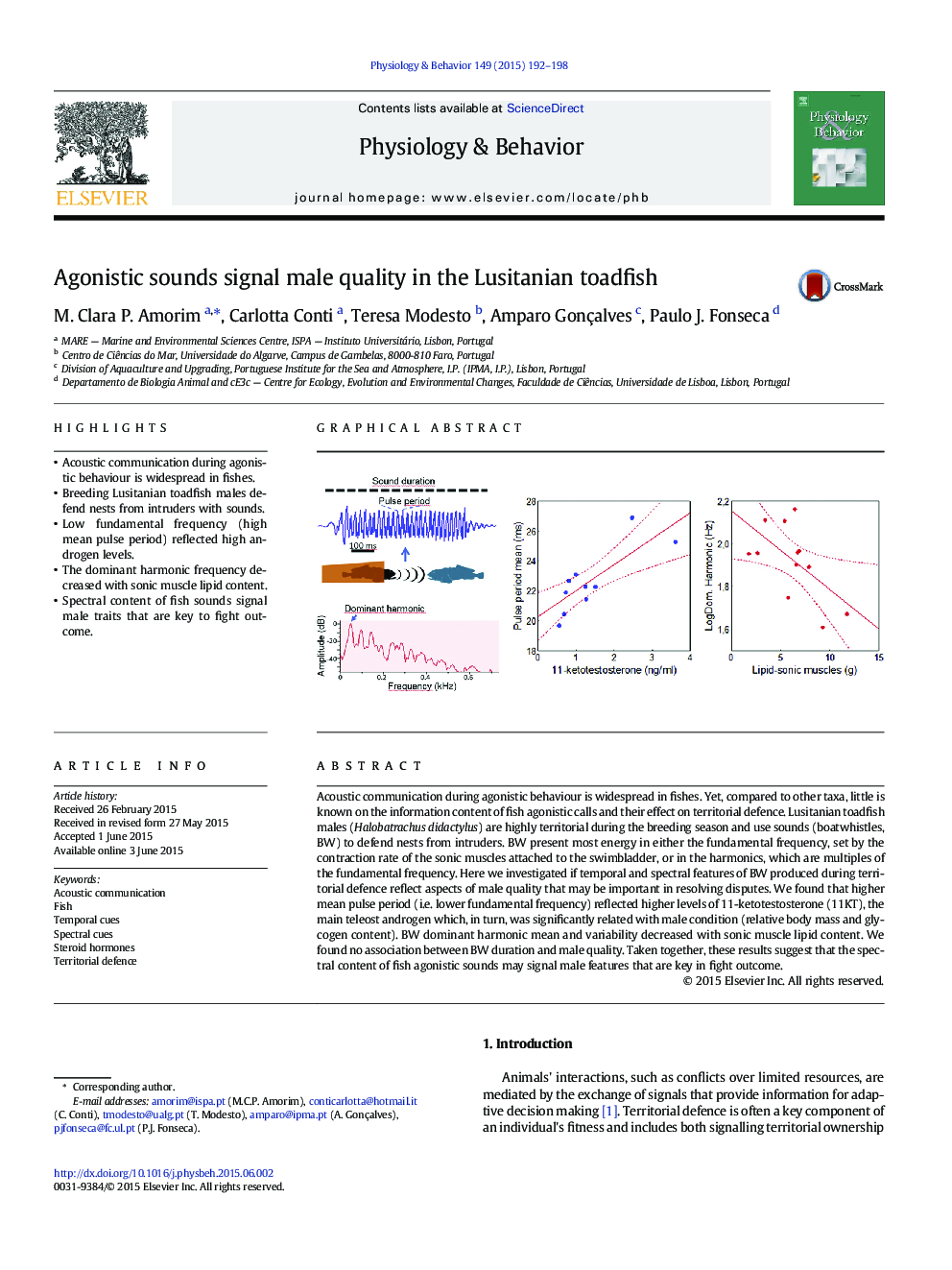| Article ID | Journal | Published Year | Pages | File Type |
|---|---|---|---|---|
| 5923577 | Physiology & Behavior | 2015 | 7 Pages |
â¢Acoustic communication during agonistic behaviour is widespread in fishes.â¢Breeding Lusitanian toadfish males defend nests from intruders with sounds.â¢Low fundamental frequency (high mean pulse period) reflected high androgen levels.â¢The dominant harmonic frequency decreased with sonic muscle lipid content.â¢Spectral content of fish sounds signal male traits that are key to fight outcome.
Acoustic communication during agonistic behaviour is widespread in fishes. Yet, compared to other taxa, little is known on the information content of fish agonistic calls and their effect on territorial defence. Lusitanian toadfish males (Halobatrachus didactylus) are highly territorial during the breeding season and use sounds (boatwhistles, BW) to defend nests from intruders. BW present most energy in either the fundamental frequency, set by the contraction rate of the sonic muscles attached to the swimbladder, or in the harmonics, which are multiples of the fundamental frequency. Here we investigated if temporal and spectral features of BW produced during territorial defence reflect aspects of male quality that may be important in resolving disputes. We found that higher mean pulse period (i.e. lower fundamental frequency) reflected higher levels of 11-ketotestosterone (11KT), the main teleost androgen which, in turn, was significantly related with male condition (relative body mass and glycogen content). BW dominant harmonic mean and variability decreased with sonic muscle lipid content. We found no association between BW duration and male quality. Taken together, these results suggest that the spectral content of fish agonistic sounds may signal male features that are key in fight outcome.
Graphical abstractDownload full-size image
